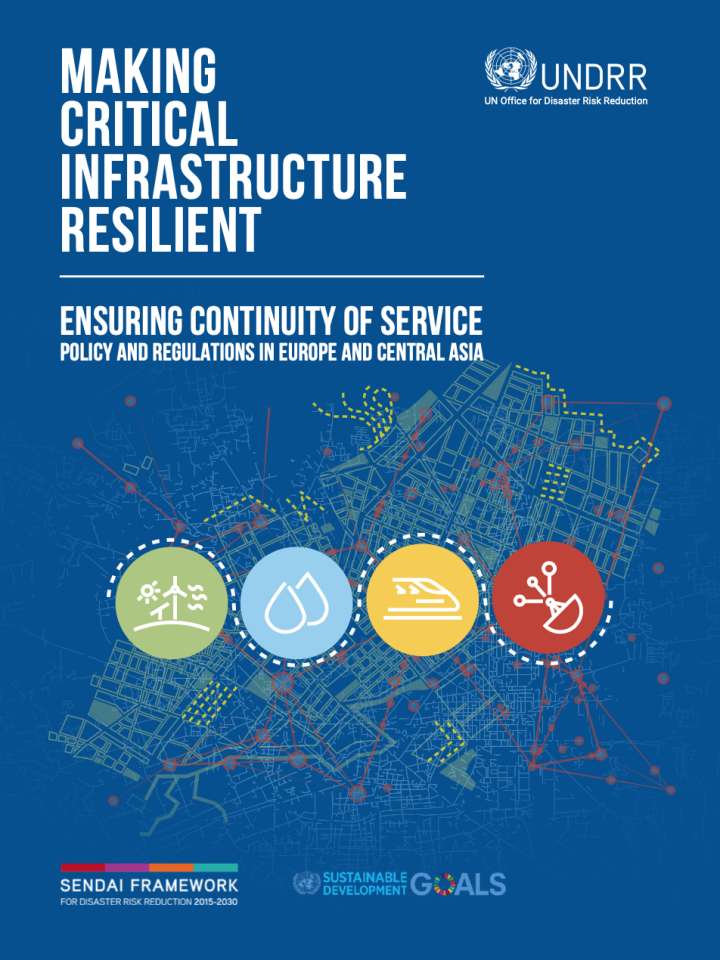Making Critical Infrastructure Resilient: Ensuring Continuity of Service - Policy and Regulations in Europe and Central Asia
The Sendai Framework for Disaster Risk Reduction identifies the resilience of critical infrastructure as a key component for disaster risk reduction – in line with Goal 9 of the 2030 Agenda for Sustainable Development, which calls for “sustainable industrial development; universal access to affordable, reliable, sustainable and modern energy services; sustainable transport systems; and quality and resilient infrastructure.” The Sendai Framework Monitor (SFM) reported that, in 2018 alone, 1,889 infrastructure assets in 20 countries in Europe and Central Asia were damaged or destroyed as a result of disasters, amounting to direct economic losses of over $3 billion (UNDRR SFM report, 2020).
The purpose of this report is to provide an overview and an assessment of the level of inclusion of risk reduction and resilience measures in national policies and regulations for the protection of critical infrastructure in countries in Europe, Central Asia and the South Caucasus against disasters and the adverse impacts of climate change.
Key recommendations focus on the need to:
- ESTABLISH a national definition for ‘resilient infrastructure’.
- INCORPORATE AND LINK infrastructure resilience in national and local disaster risk reduction strategies.
- DEVELOP a better understanding of inter- dependencies, interaction and connectedness of infrastructure systems.
- IMPROVE coordination at different levels and among all relevant parties.
- ACTIVELY ENGAGE AND CREATE incentives for private sector participation supported by risk-based performance.
- FACILITATE the collection of risk data and make disclosure of information on climate disaster risks mandatory.
- ENHANCE knowledge and build capacity.
The combination of increasing demands for new and innovative infrastructure and services, on one hand, and the current reality of dangerously outdated assets in Europe and Central Asia, on the other, calls for resilient and more sustainable investment decisions while planning and realizing infrastructure projects. According to a study by the EU Joint Research Centre, damage to infrastructure as a result of disasters and climate change in Europe currently amounts to approximately €9.3 billion annually; this is expected to soar to €19.3 billion by 2050 and €37 billion by 2080 (EU Members, Switzerland, Norway and Iceland are included in the study). The energy and transport sectors will be the most affected, with annual expected damages of €8.2 billion by 2080 for the energy sector and €0.8 billion by the end of the century for the transport sector (EU Science Hub, 2017).
